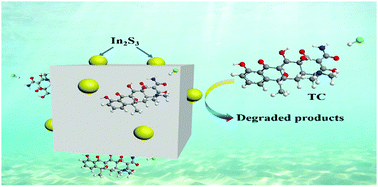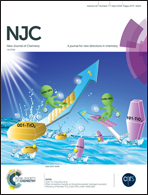Fabrication of In2S3/NaTaO3 composites for enhancing the photocatalytic activity toward the degradation of tetracycline
Abstract
The rapid recombination of electrons and holes in a single photocatalyst largely limits its photocatalytic efficiency. Fabricating a heterojunction with suitable band energy of two different semiconductors is considered to be an effective strategy to address this issue and thus improve its photocatalytic activity. In this work, an In2S3/NaTaO3 composite was prepared by a facile hydrothermal reaction. In comparison with pure NaTaO3 and In2S3, the In2S3/NaTaO3 composite exhibits enhanced photocatalytic efficiency towards the degradation of tetracycline hydrochloride (TC) under simulated solar irradiation. The formation of the heterojunction significantly enhances the transfer and separation efficiencies of photo-generated electrons and holes. This could be validated by transient photocurrent responses and electrochemical impedance spectra. The trapping experiment and electron paramagnetic resonance suggest that the holes and superoxide radicals are the main species in the photocatalytic reaction. Finally, a possible photocatalytic mechanism was proposed based on the experimental results and the energy band diagram between NaTaO3 and In2S3.



 Please wait while we load your content...
Please wait while we load your content...